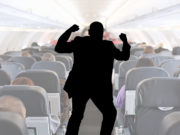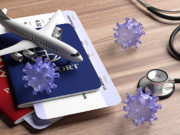The European Aviation Safety Agency (EASA), citing several instances of explosive openings of doors on parked airplanes, including a fatal accident in Finland in 2018, has recommended that operators and maintenance providers act to reduce the risk of such events in their operations.
The Finland accident, which occurred Jan. 4, 2018, in Kittilä, killed the captain of a Gulfstream G150 business jet when a fuselage door blew open and he was knocked to the ground. The blast also injured a cabin assistant and caused substantial damage to the cabin.
EASA issued recommendations Tuesday in the form of Safety Information Bulletin 2019-02.
The bulletin noted that the main factor associated with the explosive door openings has been “inadvertent development of an excessive differential pressure between the inside and the outside of the aeroplane.”
The agency explained that “when an aeroplane is parked, cooling or heating of the aeroplane cabin can be provided through the air conditioning system powered up by the auxiliary power unit (APU) or an external source of air (e.g., ground air conditioning cart) ducted to the aeroplane cabin. Closing all aeroplane doors helps to reach and maintain the desired temperature. However, it may also result in an undesired buildup of excessive differential pressure between the cabin and the outside environment, if the outflow valve is closed. As a result, this may cause an explosive door opening.”
EASA said an explosive opening may occur during normal operations, maintenance activities or ground training, and operational procedures should be developed to mitigate the hazard, including ensuring that “there are always means to release the cabin air pressure before conditioning the cabin on ground with the APU or an external source, and before opening the aeroplane door.”
Recommended procedures should include verifying, if possible, that outflow valves or other external valves designed to prevent a buildup of cabin pressure are open. In addition, during maintenance on a pressurized airplane, a pressure buildup relief mechanism is operated before a fuselage door is opened, EASA said.
The agency also said that airport operators should ensure that rescue and firefighting personnel are aware of the risk of an explosive door opening and that others who may need to enter an airplane should obtain advice from the operator or maintenance provided before opening a fuselage door on an airplane that might be pressurized.

